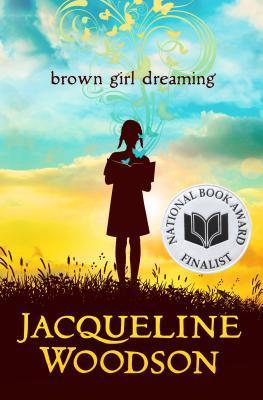Industry Q&A with editor Grace Kendall
Please tell us about the most recent diverse book you published.
While I was at Scholastic, I had the great pleasure of editing Edwidge Danticat’s first picture book, Eight Days: A Story of Haiti. It explored a young Haitian boy’s experience in the eight days following the devastating earthquake.
I also published the Jewel Society series, which features four best friends of varying backgrounds and academic interests. By working together and using their individual strengths, the girls solve a series of jewel heists in and around the Washington, DC area. A smart and sassy series for girls!
And here at FSG, I’ve just acquired a young middle-grade series starring two best friends, one of which is Latina. They live in a quirky neighborhood, inspired by The Mission District of San Francisco, where the townspeople are as diverse as the girls’ adventures, and where Spanish is spoken widely.
What is one factor holding you back from publishing more diverse books OR what’s the biggest challenge for publishing companies who want to feature more diverse titles?
There is nothing at Macmillan holding me back from publishing diverse books. As an editor committed to publishing more authors and illustrators of color, I’m always on the look-out for new talent. The Brown Bookshelf is a great place to go to learn about diversity in children’s literature and to get ideas about people I’d like to work with! In fact I wish there were more resources like it (websites or associations) that collected and featured diverse children’s book creators, especially those who are not yet published. And of course I rely on agents who are representing new talent with an eye toward diversity.
What is an example of a current bestselling diversity title?
Brown Girl Dreaming by Jacqueline Woodson (Penguin) is a New York Times Bestselling title.
I’m also excited about the buzz that the following books are getting in the marketplace and in the media:
- How It Went Down by Kekla Magoon (Holt/Macmillan)
- The Great Greene Heist by Varian Johnson (Arthur A. Levine Books/Scholastic)
- The Port Chicago 50: Disaster, Mutiny, and The Fight For Civil Rights by Steve Sheinkin (Roaring Brook/Macmillan)
Who would you consider to be a diversity pioneer in children’s and/or young adult literature?
The editors at Arthur A. Levine Books/Scholastic (Arthur Levine, Cheryl Klein, and Emily Clement) continue to impress me with their commitment to publishing books with a range of perspectives. The work they do with diverse authors and illustrators—as well as books originally published outside of the United States—is truly inspiring.
If you have an author who wants to write about characters outside of his/her own background, how do you generally handle that? Do you encourage your author to dive into research, or do you dissuade your author from venturing into what is unfamiliar to them?
I haven’t yet had this experience with one of my authors, but here’s what I generally suggest to writers who ask me the same questions at conferences.
- I imagine we would have a discussion about why he or she wants to write outside of their own experience. I think it’s important to be honest about your intentions in telling a certain kind of story, as it will no doubt affect the politics (intended or unintended) of your writing later on.
- If we agreed to move forward, I would encourage the author to research the subject matter (time, place, people) as well as consult with individuals who share a similar background to the characters in his/her work.
- Finally, as the editor, it would be my responsibility to review the writing on the page and assess how I think the work would serve the children reading it. I would also find a secondary reader or two (again with a similar background to the characters and story at hand) to give me their honest opinion of the book.
Tell us about your editing process. When you edit cross-culturally, how do you ensure that the book gets a culture with which you might not be as familiar “right”?
If I’m editing a book featuring a culture, heritage, or place that I feel unfamiliar with, I will definitely enlist the help of an expert or someone intimately experienced with the subject matter at hand. I do this most often with nonfiction titles, even if the author might be considered an expert in the field or has had an expert read over their work. I budget for this early on in the publishing process, and always prefer to have at least a second pair of eyes to help us.
If you could receive a manuscript about one culture or subculture that you don’t normally see, what would it be?
Native North Americans, for sure. I grew up loving (and studying) Sherman Alexie’s work; and I’m jealous of Cheryl Klein’s publication of If I Ever Get Out Of Here by Eric Gansworth. To name some specific groups, maybe the Florida Seminoles or the Aleutians from the islands of Alaska.
I would also love to see stories about and/or by people from the Caribbean and Cuba. Having grown up in Miami, Florida, I’m always drawn to communities rich with change at the hands of immigrants. Port cities or border towns can make for dynamic settings.
And lastly, I would love to work on books from or about South Africa. I lived and studied there for six months, and am always looking for characters or writers from that wonderfully diverse country.


Grace Elizabeth Kendall, Editor, Farrar, Straus, Giroux Books for Young Readers/Macmillan. She works on a wide range of material from picture books to young-adult novels, both fiction and nonfiction. Before joining FSG in the spring, Grace worked at Scholastic where she edited Hot Rod Hamster: Monster Truck Mania! by Newbery Honor author Cynthia Lord and New York Times Bestselling Illustrator Derek Anderson; A Bunny in the Ballet by debut author/illustrator Robert Beck; and the middle-grade series Jewel Society by Hope McLean. She also worked on Eight Days: A Story of Haiti by two-time National Book Award Nominee and MacArthur Fellow Edwidge Danticat and illustrated by Alix Delinois.


